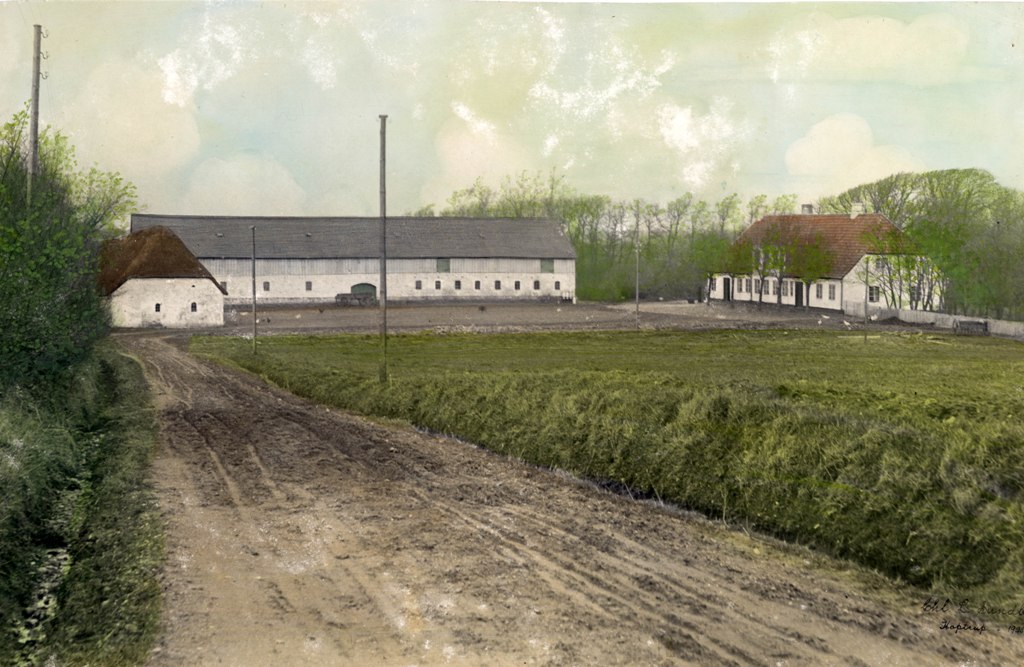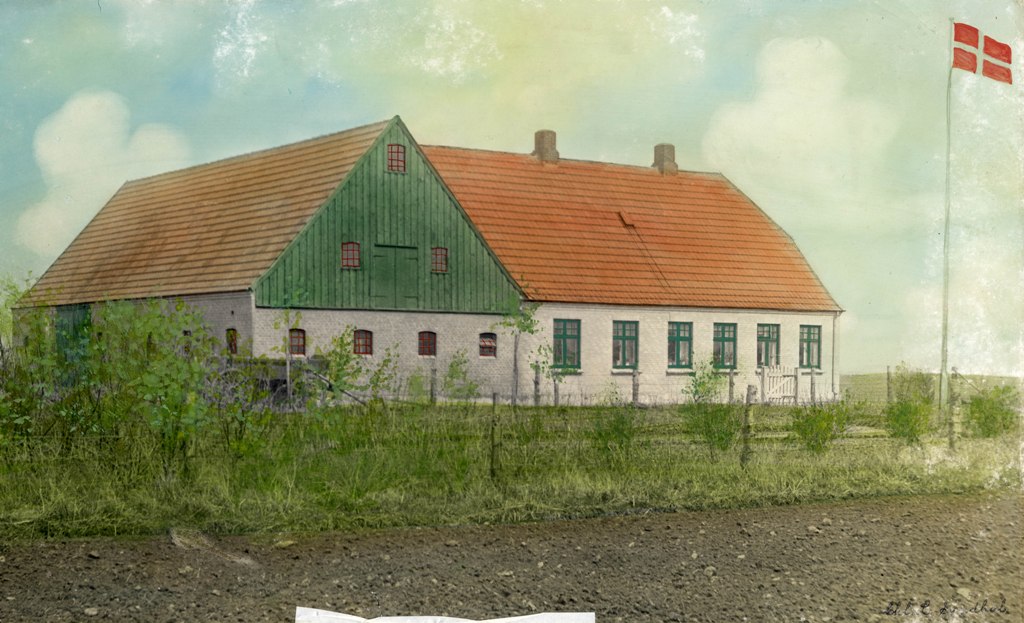The domain farm Lundsgård
Lundsgård is one of the oldest farms in Skudstrup. In 1900 the farm was bought by the Prussian domain department. The purchase of the farm was a part of the plan towards making South Jutland pro-German.
For a modest fee, Lundsgård was entrusted to a German lessee. He was supposed to transform the farm into a model farm, a true role model for the region's farmers. At the same time he was to influence them in the German direction.
At the Reunification in1920, the Danish state took over Lundsgård. In 1923 the farm was divided into one main section and 11 new state smallholdings.
 The farm Lundsgård, Lundsgårdsvej 10, 1928. Coloured photography.
The farm Lundsgård, Lundsgårdsvej 10, 1928. Coloured photography. Photo: Skodborg Hjemstavnsarkiv.
Acquisition of farms south of the river Kongeå
During the period 1896-1916, the Prussian state bought a number of large farms in South Jutland. These acquisitions were a part of the national struggle. The goal was to Germanize South Jutland. Most of the acquisitions were in the area just south of the river Kongeå where the Danish were at their strongest.
The German state acquired a total of 36 major farms in Southern Jutland, which were transformed into state farms. Twenty-four of the farms were in the Haderslev region. Two of the farms, Lundsgård and Sundbølgård, were in the parish of Skodborg.
The Germanizing was done by employing pro-German politically active tenants on the farms. There were large numbers of people on the farms and most were German. The farms were supposed to emerge as model farms, an example for local farmers to follow. New constructions or modernization of the buildings were carried out in a style that the authorities perceived as being distinctively German.
South Jutland's northernmost farm
Lundsgård was bought by the German Domain department in 1900. The farm is South Jutland's northernmost farm, which perhaps was one of the major reasons for the purchase, as the farm was not one of the largest. After the acquisition of the farm Holmgård in 1907, the area was extended to a total of188 hectares.
The buildings dated from about 1840 and they were somewhat in need of repair. The Domain Department decided to refurbish and modernise the existing buildings rather than construct new ones.
There ended up being three different German tenants on Lundsgård from 1900 to the Reunification in 1920. The last was Marius Iversen, who had taken over the lease of the farm in 1919.
Lundsgård in Danish hands
At the Reunification in 1920, the Danish state took over the domain farms. Lundsgård was one of the first domain farms to be divided in 1923. The farm's land was used to establish eleven state smallholdings, and six existing smallholdings were given supplementary plots. A modest 48 hectares remained. This was sold along with the buildings to a private owner.
The colony of state smallholdings ended up being located along Lundgårdsvej. Farms lie dotted along there like pearls on a string. They are all designed by architect Jep Fink from Aabenraa and are all between eight and sixteen hectares in size.
At the time of the division in 1923, it was possible for a family to exist on a state smallholding. The operation was intensified. Today none of the sites are used for agricultural purposes.
Literature
Kragh-Nielsen, Niels H.: Domænegårde i Rødding Kommune. I historisk årbog for Rødding Kommune, 1984, 49-79.
Kragh-Nielsen, Niels H. (editing and photo text): De sønderjyske domænegårde. Sønderjyske billeder 7, 2001
Writer: Linda Klitmøller, museum curator, Sønderskov Museum

Smallholding Lundsgårdsvej 8, 1928. Coloured photography.
Photo: Skodborg Hjemstavnsarkiv.

